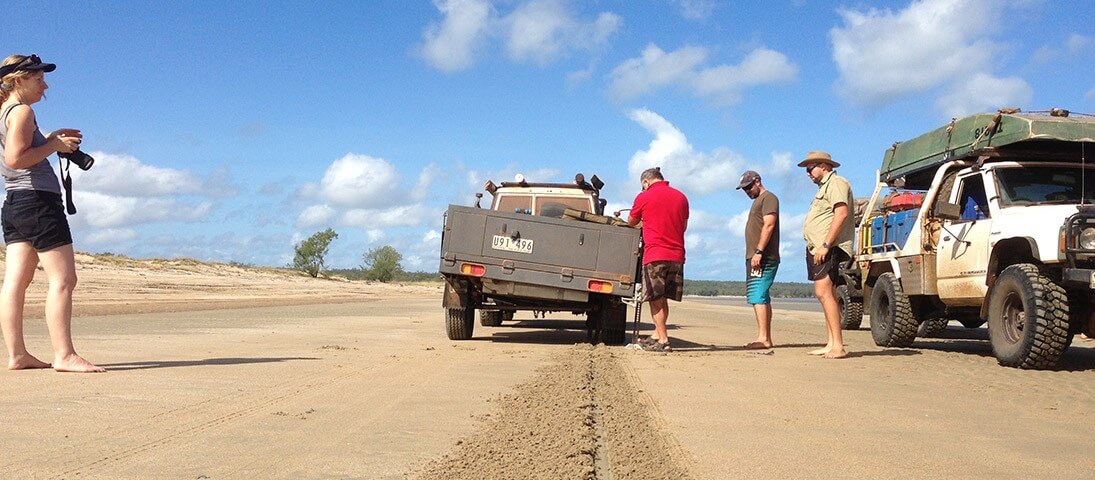Subscribe to ARB
Subscribe to ARB to receive your regular 4x4 CULTURE magazine, exclusive ARB promotional news and new product release information.
13th April, 2016

WE CONSULT MARK LOWRY FROM ARB HQ ABOUT HOW TO ENSURE TRAILER TROUBLES DON’T RUIN YOUR NEXT TRIP.
There is nothing worse than spending countless hours researching your next big trip, putting every effort into ensuring your 4WD is ready to tackle the toughest tracks, only to set off and realise that your trailer just might not be up to the same task. With over 25 years of touring experience under his belt, Mark Lowry gives us his tips to ensure you (and your trailer) are well prepared for your next adventure.
Words by Mark Lowry
A while ago I remember travelling the Gunbarrel Highway and finding no less than seven trailers in various states of disrepair – states that I viewed as completely preventable had they been better designed or properly maintained. I noticed that all of these trailers were of the leaf-sprung box type. Corrugations are incredibly tough on a vehicle, even if coil springs are fitted, so the effect on a trailer without the same sophisticated suspension can often be disastrous.
Most box trailers use a standard spring, rated to 500kg or so. They have a bushed eye on the front and a slipper on the rear, meaning that the rear of the spring is running metal to metal and simply sliding on the chassis, retained only by a clamp or bracket. These trailers do not use a shock absorber thus resulting in uncontrolled suspension movement. A tough track or stretch of corrugation can cause this type of spring to fatigue and simply break off at the eye or through the centre bolt hole. Although at the time this may seem like the end of the trip, with a few tools and some clever ingenuity, you may be back on the road in no time. If you are afraid that your trailer may not be up to the task your 4WD has been prepared for, your best bet is to carry a few spares. A spare spring pack or main leaf, a couple of u-bolts and an eye bolt will set you back less than a hundred and fifty dollars and doesn’t take up much space. These parts are quite easy to change using a few simple tools.
ARB’s 4×4 Action editor, Jessica Vigar had a bad experience and agrees with Mark, that not being prepared can really change your plans. “Whilst driving along Vrilya Point last year, a camper trailer in our convoy snapped all seven leaf springs in half,” she said.
“We managed to make it to Loyalty Beach by innovatively using the shaft from a vehicle jack as an untested, temporary bandaid solution (not recommended). Our trip was then put on hold for five days whilst we waited for a new pack of leaf springs to be delivered from Cairns.”
The best preparation of course is to ensure that when you are first in the market for a camper trailer, that you look for a heavy-duty trailer that is built for serious off roading. The A frame should be very strong and if it does have leaf springs, they should have double spring eyes, not slippers. Shock absorbers will take some of the harshness out of the ride, which, in turn, will create less stress and wear on the other components. If you are in doubt about your trailer’s suitability for your next trip, take it to a reputable service agent or manufacturer, before you leave.
Subscribe to ARB to receive your regular 4x4 CULTURE magazine, exclusive ARB promotional news and new product release information.